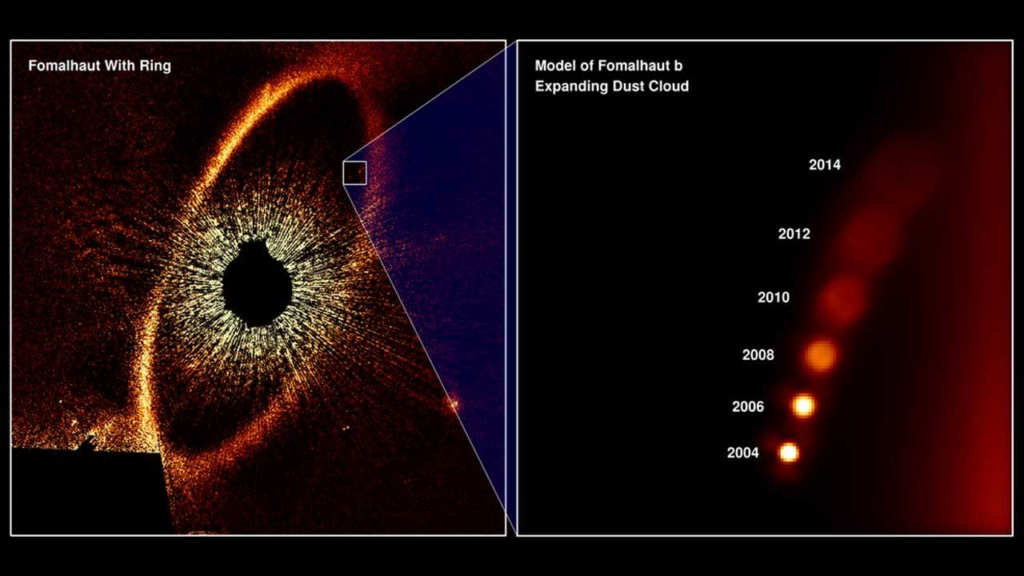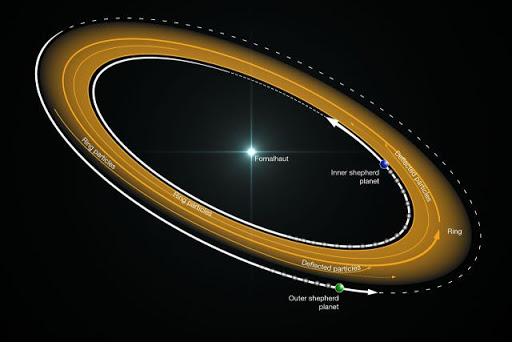The Exoplanet that Vanished
An artist's impression of the Fomalhaut system.

Credits: NASA, ESA, and A. Gáspár and G. Rieke (University of Arizona)
What had been thought to be planet beyond our solar system now seems to have vanished, and astronomers are looking for a plausible explanation. One interpretation is that, rather than being a full-sized planet, it could instead be a vast, expanding cloud of dust produced in a collision between two large bodies orbiting nearby star Fomalhaut. Future, additional observations might be able to confirm this conclusion.
“These collisions are exceedingly rare and so this is a big deal that we actually get to see one,” said András Gáspár of the University of Arizona, Tucson. “We believe that we were at the right place at the right time to have witnessed such an unlikely event with NASA’s Hubble Space Telescope.”
“The Fomalhaut system is the ultimate test lab for all of our ideas about how exoplanets and star systems evolve,” added George Rieke of the University of Arizona’s Steward Observatory. “We do have evidence of such collisions in other systems, but none of this magnitude has been observed in our solar system. This is a blueprint of how planets destroy each other.”
Credits: NASA, ESA, and A. Gáspár and G. Rieke (University of Arizona)
Read the complete article at the NASA Exoplanet website.

